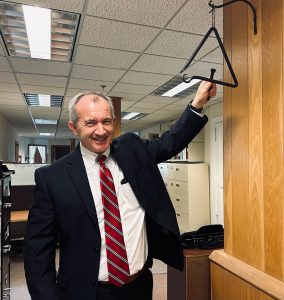In a recent meeting with the Design Review Board, attorney Tim Pease from the Bangor law firm Rudman Winchell shared valuable advice regarding the board’s decision-making process. Pease highlighted the need for adjustments in their current site visit practices, emphasizing the potential legal complications arising from individual site visits conducted outside official meetings. This article will summarize Pease’s advice and expand upon the importance of well-planned, transparent site visits as an integral part of the review process.

Pease strongly discouraged board members from conducting individual site visits, citing their susceptibility to legal challenges. By visiting project sites independently and without the entire board present, decisions made during such visits could be called into question. In the event of a lawsuit, opposing parties could claim that decisions were based on information obtained outside the official meeting, potentially compromising the integrity of the decision-making process.
To ensure a fair and transparent review process, it is crucial for the board to have access to all relevant information presented by applicants. While it may be tempting to conduct individual site visits when faced with incomplete applications, board members should refrain from gathering information independently. The burden of proof and the responsibility to provide comprehensive information rests with the applicant, not the board members. By avoiding individual site visits, the board maintains impartiality and prevents any appearance of bias in their decision-making.
During the meeting, board members raised concerns about their ability to engage with locations under review in their personal time. Pease clarified that context plays a significant role in determining the permissibility of such visits. If a board member is visiting a location solely for the purpose of gathering materials to evaluate an application, it raises suspicions and may be challenged legally. However, if a visit is unrelated to an ongoing review and serves other personal purposes, such as living in the area or engaging in routine activities, it does not compromise the decision-making process.
While cautioning against individual site visits, Pease emphasized the importance of properly planned and documented site visits as an integral part of the review process. He recommended incorporating site visits into the board’s regular agenda, ensuring they are noted ahead of time and open to the public. By conducting site visits collectively and in a transparent manner, the board demonstrates a commitment to fairness, informed decision-making, and public engagement.
Attorney Tim Pease’s advice to the Design Review Board emphasizes the significance of adhering to proper site visit procedures in order to maintain a fair and transparent decision-making process. Individual site visits can potentially invite legal challenges and compromise the integrity of board decisions. By refraining from conducting independent visits, the board avoids any appearance of bias and upholds the responsibility of applicants to provide comprehensive information. Properly planned and public site visits, on the other hand, enhance the review process, fostering transparency and enabling informed decisions. By incorporating Pease’s advice, the Design Review Board can strengthen its practices and build public trust in its decision-making capabilities.
Learn more about Tim Pease by clicking here.








